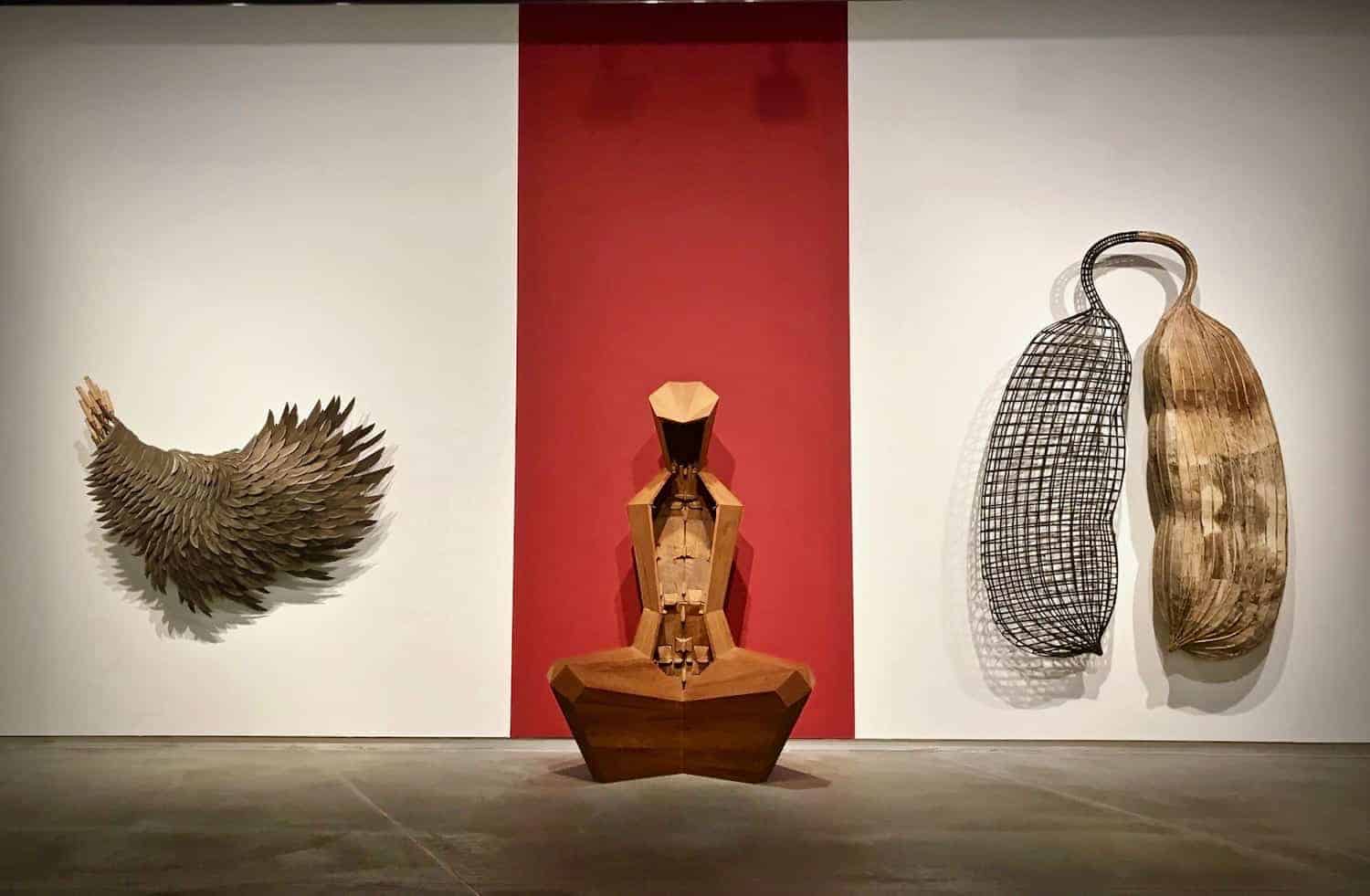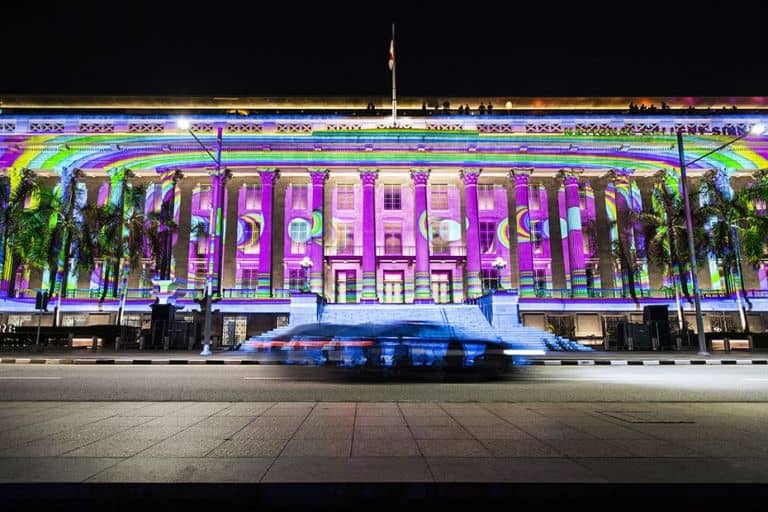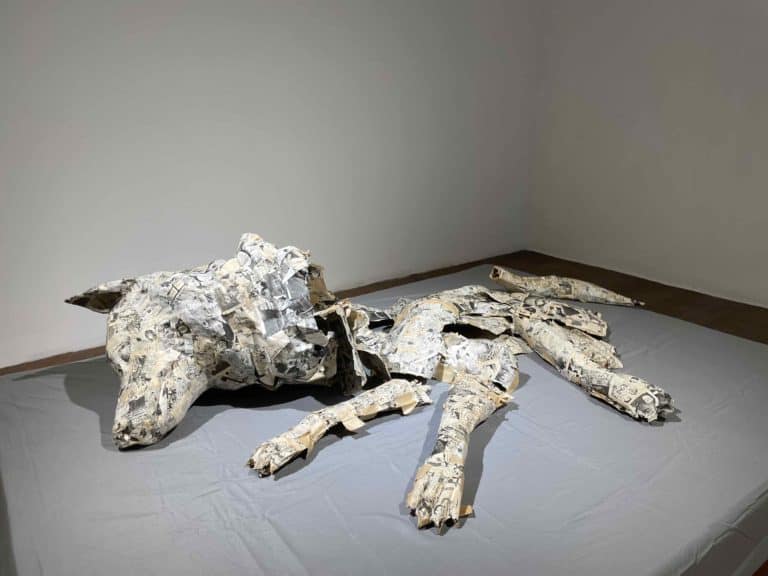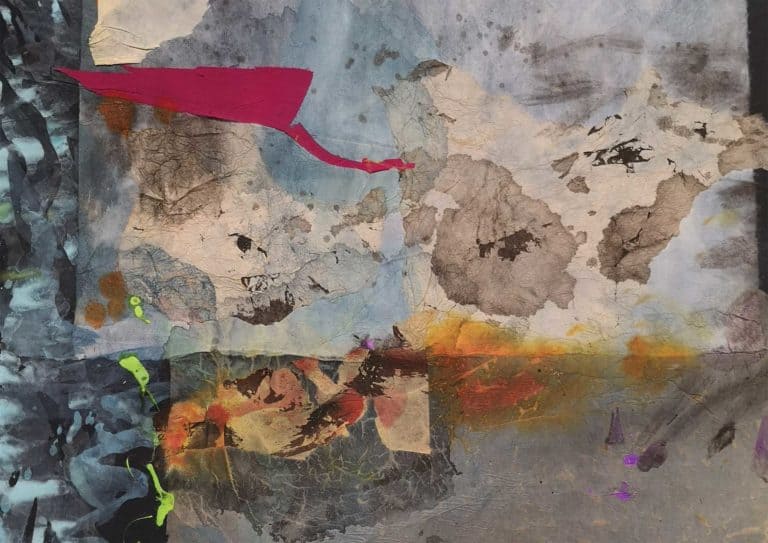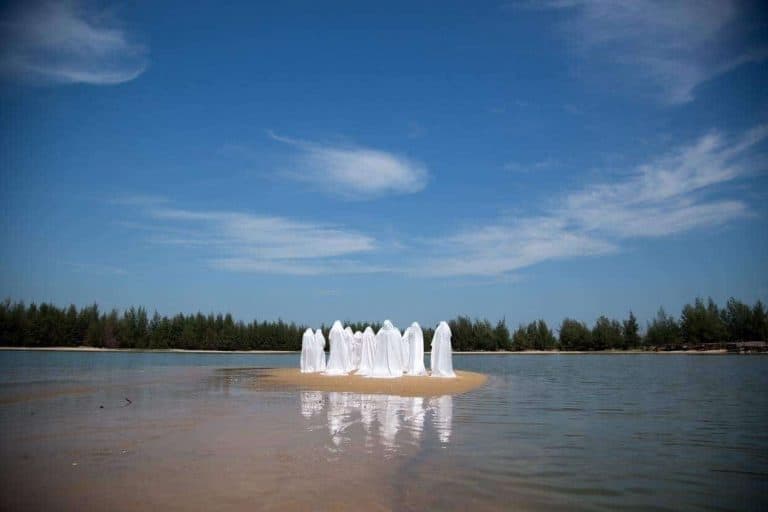We are currently experiencing a moment in art where it’s almost a requirement for artists and their work to be politically engaged. Institutional critique is now the norm rather than the upstart fringe movement it used to be. In this era of climate crisis, police brutality, the resurgence of fascism, mass migration and mass deportation, it seems that if art doesn’t at least try to change the status quo, then what is it good for? The latest show at ILHAM Gallery, Fracture/Fiction: Selections from the ILHAM Collection, is aware of this. Despite being a collection show, it attempts to break away from being a mere display of buying power to construct a narrative that is relevant and meaningful to our current time.
The show offers an interesting glimpse into how this moment in art is being translated in South and Southeast Asian practices. In a way, the recent shift towards the political is not new for these artists, being, as they are, a part of the “Global South”. Their entire experience has, I would argue, always been inescapably political.
The introductory text on the front wall of the gallery reads, “Fracture/Fiction invites visitors to contemplate how artists address the fractures that exist in society and the age in which they live. These artists often engage with the subject matter from their everyday lives, transforming them through their art to subvert and create fictions, often in unexpectedly beautiful ways.” It is a relatively neutral introduction that belies the strength that some of the works on show have in their political thrust.
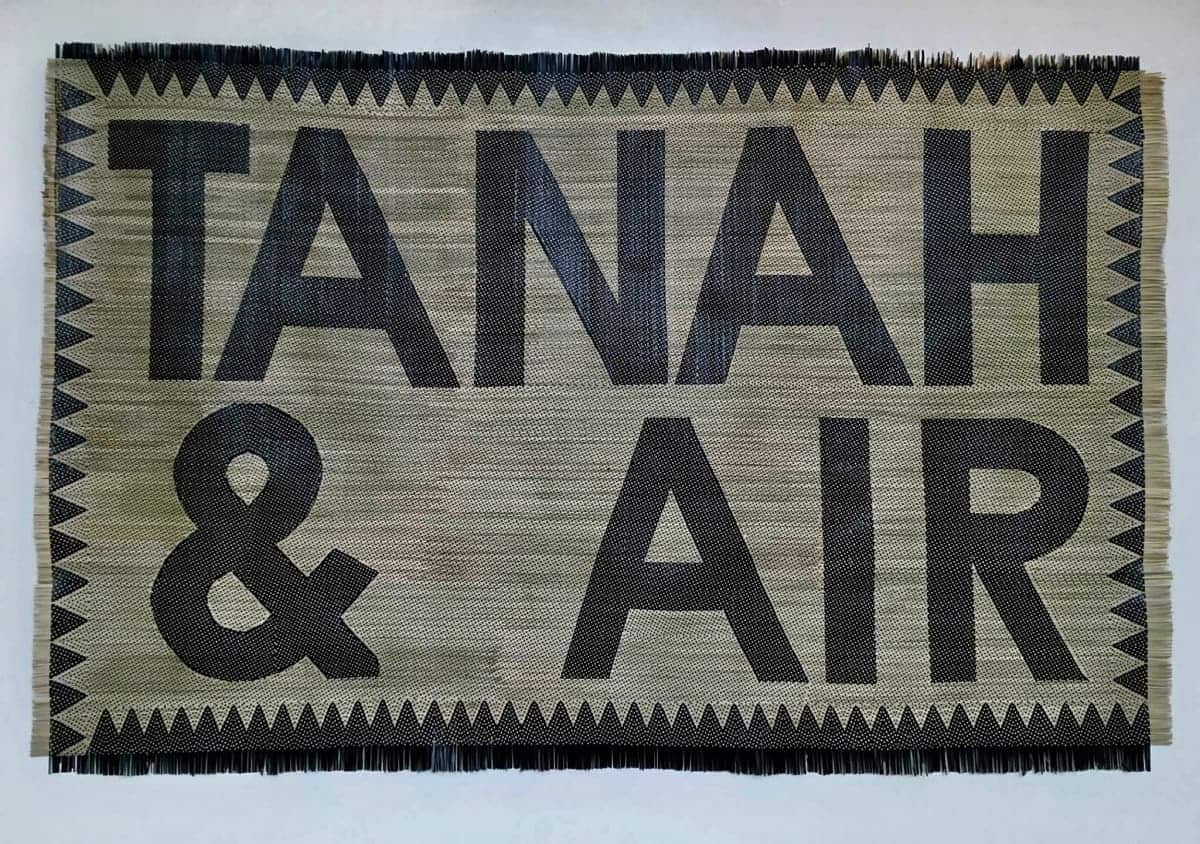
At a time when Indonesian art collective ruangrupa has been selected to curate the high-profile Documenta 15, the concepts of community, collectives and inclusivity seem to be having a moment. Indeed, some of the strongest works in the show are ones built around a sense of community and solidarity. Works such as Muhammad “Ucup” Yusuf’s Tak Kunjung Padam and Pangrok Sulap’s Sabah Tanah Airku, both large-scale woodcut prints, allegorise various crises affecting the artists’ communities in Yogyakarta and Sabah respectively. Sabahan artist Yee I-Lann’s latest turn towards tikar-weaving works is represented by TanahAirKu #01, a woven mat made with the assistance of Keningau weavers, Julitah Kulinting, Lili Naming, Juraen Sapirin, and Shahrizan Rupin. Her tikars allow her community to enter into white cube spaces that they have traditionally been excluded from. The tikar acts as a symbolic site for communal gathering, its production requiring the collective labour of many women.
“I see the woven Tikar mat as providing a kind of performative space. When laid out on the ground, it invites a gathering of some sort, like a platform or stage, a demarcated space for communal interaction. Tanah (earth or land) and Air (water) when conjoined become Tanahair, meaning ‘homeland’. Sabah is made up of two distinct indigenous peoples; the land indigenous and the sea indigenous. Only when the two are woven together, come together, on a shared platform, can Sabah be whole, as our shared TanahAirKu”
Yee I-Lann
Valentine Willie, curator of the show and Creative Director of ILHAM, appears to likewise have thought that these were among the show’s strongest works. He has given them plenty of breathing space on the wall, capturing their scale magnificently. Another of the show’s most striking works is Isabel and Alfredo Aquilizan’s Left Wing Project, a massive bird’s wing made out of used sickles that the couple collected through crowdsourcing. The work is placed in the gallery’s centre wall, and the visitor’s sightline is immediately drawn to it upon entry. Despite the sharpness of the blades, the work as a whole invokes a sense of nobility rather than menace, the rust covering each sickle speaking to years of backbreaking labour and to the struggles of agrarian communities in the region .
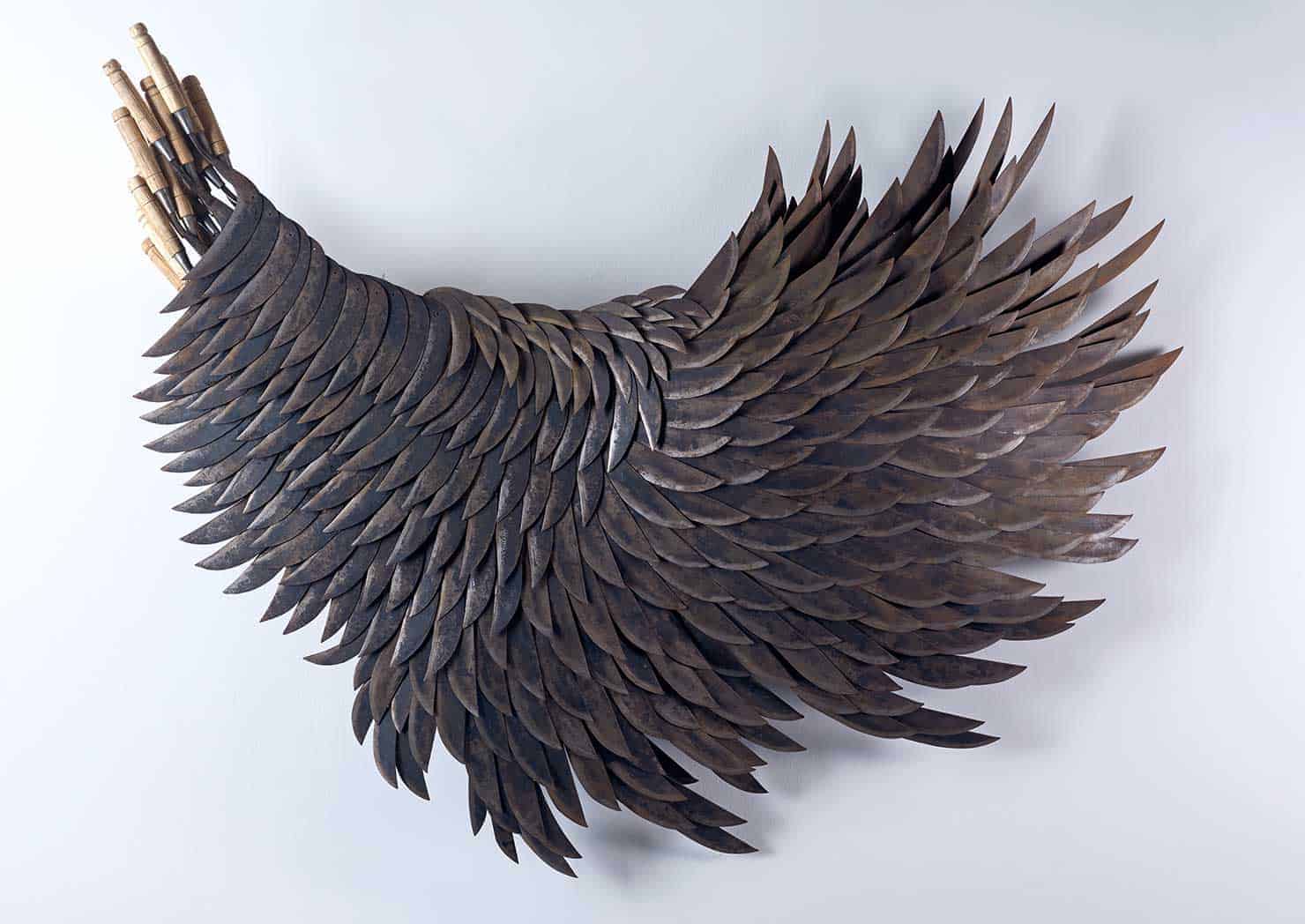
This show is, however, an example of how curation and exhibition design can sometimes work to an artwork’s advantage or disadvantage. The strongest section of the show is in the gallery’s left hall, where each work is given ample wall space and all of the major names in Malaysian art are on display. This is, after all, a Malaysian gallery catering primarily to a Malaysian public. Here is where we have works by eminent Malaysian artists like Wong Hoy Cheong, Yee I-Lann, Pangrok Sulap (the “controversial” pieces), and Simryn Gill. Other well-known regional artists are also represented, including Manit Sriwanichpoom, with works from his Pink Man series and two sculptures by Tawatchai Puntusawasdi, whose recent show at A+ Works of Art I reviewed here. It’s an impactful section that is slightly let down by how it ends – with a room where several works loosely related to environmentalism are cobbled together. The works at the start are capable of speaking for themselves, but the works towards the end falter, exposing how literally certain areas of the show appear to have been curated.

The right hall of the gallery is an example of this: Adeela Suleman’s After All It’s Always Somebody Else Who Dies seems to have been placed next to Reena Saini Kallat’s Hyphenated Lives (Pea-Kar) because both works feature birds. Kow Leong Kiang’s portrait of the late Indonesian artist Stevanus Teddy Darmawan, better known as S. Teddy D, is hung beside Thanathorn Suppakijjumnong’s Secret of Love No. 3 – because they both happen to be portraits? Similarly, the rest of that wall is filled with works that do not appear, to this writer at least, to be part of any larger narrative besides the fact that they are all figurative works.

The gallery’s right hall is an inverse of the left hall in terms of the works’ impact, as the narrative actually becomes stronger towards its end, as the works become smaller, the hanging tighter and the content of the wall texts rather more dire. Among various tragedies, the works address: the India-Pakistan partition, the 1976 Thammasat University student massacre in Thailand, the 2002 terrorist attacks in Bali, and global violence against women. This is no longer the more generic anti-consumerist critique of Sriwanichpoom’s Pink Man or Pangrok Sulap’s Sabah Tanah Airku that we saw in the opposite section of the gallery. These works are sharp in their specificity, drawing blood from a localised pain. In the middle of the room is Teyeba Begum Lipi’s sinister bed of razor blades. On the wall opposite, Adeela Suleman’s delicate porcelain plates painted with scenes of beheadings strike a sharp contrast in scale next to Vasan Sitthiket’s large, bright blue paintings of torture during the Thammasat University massacres.
The show doesn’t quite manage to overcome the fact that it is, in essence, a collection show, a display of private wealth and buying power. To be fair, it is probably an impossible task to curate a private collection show and to try to construct a single strong and cohesive narrative from works that may have appealed to a collector for a variety of reasons. Fracture/Fiction’s strength, however, lies on the individual level: while the context of the exhibition may not necessarily do justice to the works, the works alone justify a visit to the show.

Incidentally and, perhaps, ironically, my favourite work in the show is not an overtly political one – it is Kow Leong Kiang’s portrait of S. Teddy, a beautiful, distracted face, located on the edge of the gallery’s entrance – one of the last things you see before you leave.
______________________
Fracture/Fiction: Selections from the ILHAM Collection is running from now until 10 November 2019 at ILHAM Gallery in Kuala Lumpur, Malaysia.
